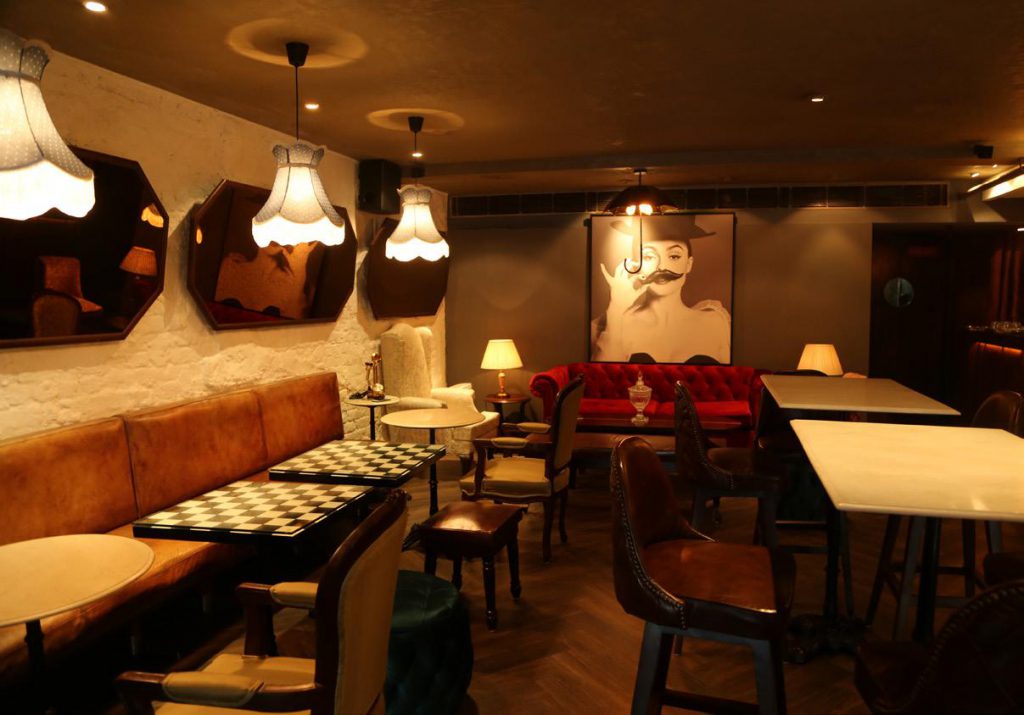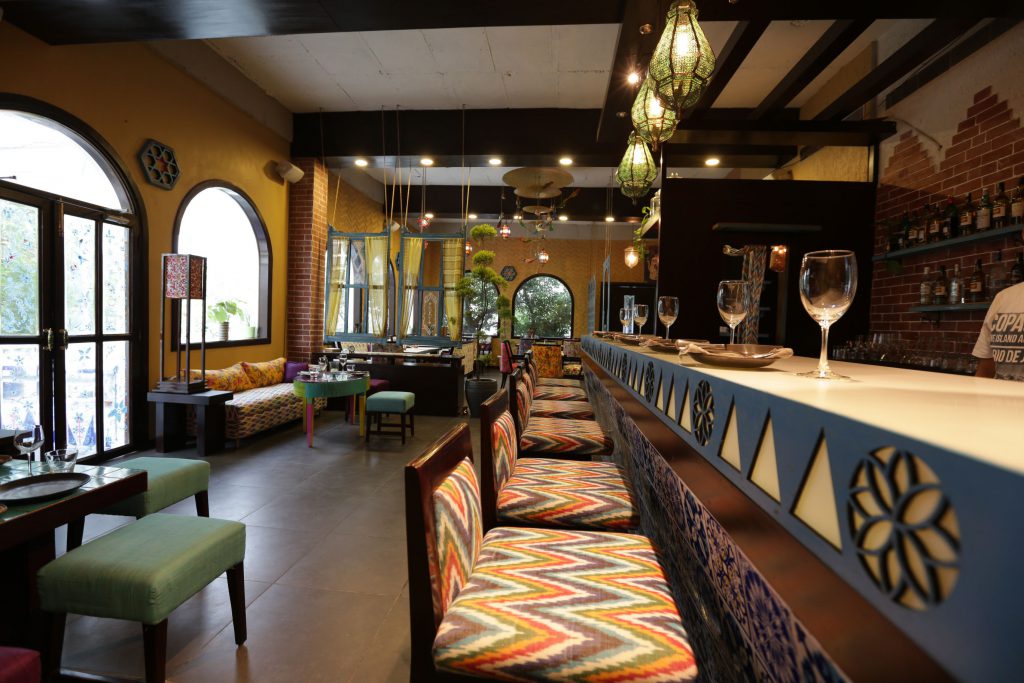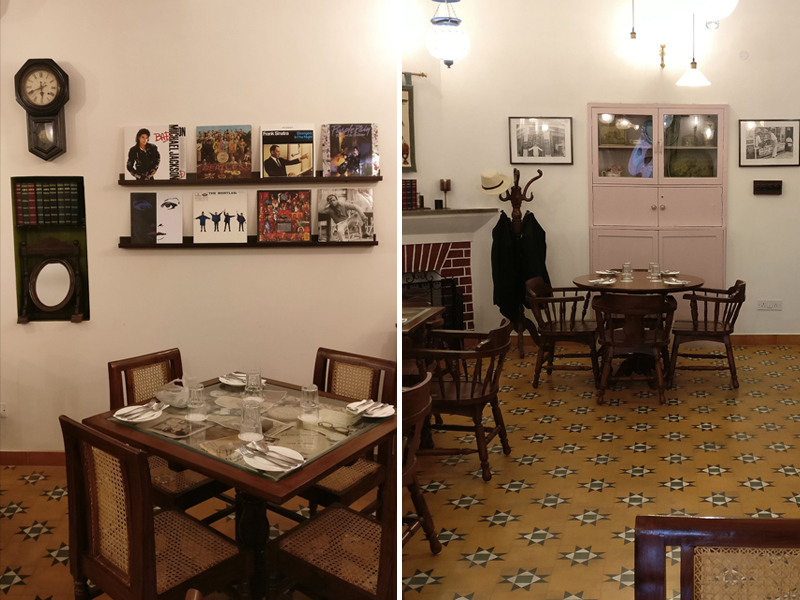
Playing a pivotal role in culminating the dining experience, several elements like lights, colours, space, and design are strung together to orchestrate a restaurant’s story. While these find conspicuous space in the scribbles of those who design restaurants, they seldom cross a diner’s mind while lounging at their favourite brewpub, or forking their way through ravioli tossed in a sublime sauce. Taking a peek behind-the-scenes to understand the makings of some of Delhi’s finest restaurants, we get acquainted with experiential design experts who build the setting that elevates the food many notches higher.
Elements Leading Up To The Table
Leading us through the intricacies of the unsung art of designing a restaurant, Illustrator, Graphic Designer, and Art Director, Svabhu Kohli, shares, “Lighting, space, design, and even sound, impact how you eat your food and the mood you subconsciously slip into. Even colour is a great trigger of mood and cultural identities, as demonstrated masterfully by Fatty Bao and Guppy. Both restaurants play with fresh colours to present their respective Asian and Japanese experiences.”
Drishty Vaswani, an Experiential Designer uses graphics, objects, elements, and textures, to help the end user (customer) connect with the space. Working towards the makings of Social Hauz Khas & Defence Colony, Social Chatt, and Smoke House Deli Saket, Drishty found her calling in work that involved using her hands. It was natural progression for this student of Fashion Communication from NIFT who started her stint with Impresario Entertainment & Hospitality working on food design projects. Having worked on the store experience for I say Organic’s Select Citywalk outpost, Drishty went on to work with brands like Lock & Key, Ping’s Cafe Orient, and PDA. She believes there are two verticals of consumers, “Those who come with sole intent of ‘eating out’ at a restaurant, and those who enjoy the vibe and ambience of the place. Keeping the interest of both in mind, we design our customer experience.”
Whilst their designed spaces are regularly featured on global lists, Svabhu points out a huge gap in the sector. “Music curation is the underdog of the F&B industry. Ignoring the importance of music being a crucial mood setter elevating the food experience, many restaurants overlook the thought of having playlists relevant to the cuisine they serve. Eating sushi while listening to death metal cannot be the ideal Japanese dining scenario,” he quips.

PCO-Diva Agenzia
When Experiential Design Meets Interior Design
In the build up to a project, Drishty’s job as an Experiential Designer often overlaps with that of an Interior Designer. With clarity of vision, she is quick to explain, “My role doesn’t have defined boundaries. It does, however, have an objective – to take the process of design a step ahead, and add details to a space. At times, I stretch my scope of work, and help the interior designer with their work to arrive at a central point, which is a combination of the interiors, brand language, and operation side of the food experience.” Drishty also works closely with the logo designer to ensure the brand personality is incorporated in the design language. Determining how to carry the brand forward on social media, she follows a wholesome approach to project the brand to the consumer.

Lavaash by Saby
Svabhu has designed the logo and vibrant interiors of Lavaash by Saby, that serves Armenian food with Bengali touches. Elaborating on the makings of Lavaash, Svabhu shares, “The space is reflective of the rich heritage and the community spirit emanating from stories around the food of Armenia and Calcutta. Designing a space is also about creative freedom, that some restaurateurs give freely, and others with restraint. “With Chef Saby giving us artistic freedom we hand-painted elements like peacocks and pomegranate trees. Geometric designs and partitions were created to bring out the visual motifs reminiscent of Armenian and Bengali art. The textured walls bear organic patterns mimicking old Armenian homes whereas the textiles used for upholstery are local weaves sourced from Kolkata-based artisans. The vintage windows are hand painted with Armenian motifs, lending an old world charm. For a good mix of old and new, we used traditional elements on modern surfaces.”
The Art Of Sourcing
With a vision of stringing consumers to the story of the establishment, Vaswani begins the execution of her work. “By the time I walk into a space, the client has already finalized the concept, the layout is in place, and the making of the 3D model is underway,” she tells us. “I go through the space to see the points of communication – bare walls, ceiling or even the waiting area outside the restaurant, where we can showcase what the brand stands for.”
She is wonderfully structured in her approach and has built a simple exercise of asking clients to share five words that describe their brand best. These eventually become the five keywords that denote the brand personality. On the basis of this, she starts looking for materials (copper, bricks, upholstery, textiles etc.), and a mood board befitting the space is put together. “I can pitch an idea to my clients but executing it is more important,” says Drishty, who confesses about sourcing of material and decor objects being her strength. “I work with contractors but when needed I dig out my contacts with vendors who give a better price for the same products and do a stellar job as well,” she adds.
Making Of The Ambience: A Visual Narration Of The Brand Story
If elements creating the ambience of a restaurant connect to its food story, the product is a winner, asserts Svabhu. Restoring the iconic canteen at the beautiful building of Delhi Parsi Anjuman to its old world glory, Svabhu spent the winter art-directing the newly opened Rustom’s, “At Rustom’s, we brought forward the ambience of a traditional Parsi home whose decor highlights nuances intrinsic to the culture – tables adorned with old Parsi memorabilia, a menu that functions as a vintage photo album, LP Records, an interactive record player, carrom-board tables, hand-painted tiles, a cosy fireplace, and vintage cutlery. Chefs Kainaz Contractor and Rahul Dua helped us in keeping the space authentic and playful.”

Rustom’s at Delhi Parsi Anjuman
For Experiential Design, Vaswani delves into granular details like ‘How is the food going to interact with the customer?, ‘What will the food presentation entail?’, ‘How should our washrooms look like?’. Of her well-received latest project, Jamun – the regional Indian restaurant at Lodhi Colony, she shares, “We envisioned the space as light, happy, and inclusive without being jarring. Jamun has elements touching upon different regions of India which is fleshed out with the use of nostalgic elements like terracotta ceiling, kharbuja lights, cane-woven furniture, and upholstery using Indian textiles. Elements like the copper fans are there to complement the space yet not scream out their presence.” At Jamun, you could easily be sitting in the comfort of your own home and gaze out through the restaurant’s windows.

Purple-hued interiors of Jamun at Lodhi Colony
In stark contrast, is her work on another project of Passcode Hospitality. Ping’s Cafe Orient brings the dynamic street food of South-East Asia to the fore. The vibe one gets upon stepping into the space is the same as walking through a busy street. “On the streets everything is always screaming at you, hence providing ample space to communicate,” Drishty explains, “We used neon signages and posters. We played with the ‘reserved’ sign on tables and unabashedly labelled it ‘no parking’. At Jamun, we had to be sober, and narrated the same message using the humble Indian piggy bank (mitti ki gulak) with a ‘reserved’ sign hand painted on it. Space constraints at Jamun were turned advantageous with the introduction of Chutney Charlie – a platter of chutneys that we got designed.” The result of these two different lines of treatment to the two projects by the same artists defines Ping’s as spunky and sassy, whilst the Jamun is quaint with a touch of nostalgia.
The exemplary skill of these designers cannot go unheeded in an era when world cuisines are being dished out by restaurants. With smashing F&B concepts hitting the dining scene, design shines as a catalyst to awe-evoking ambience and a holistic eating-out experience.

